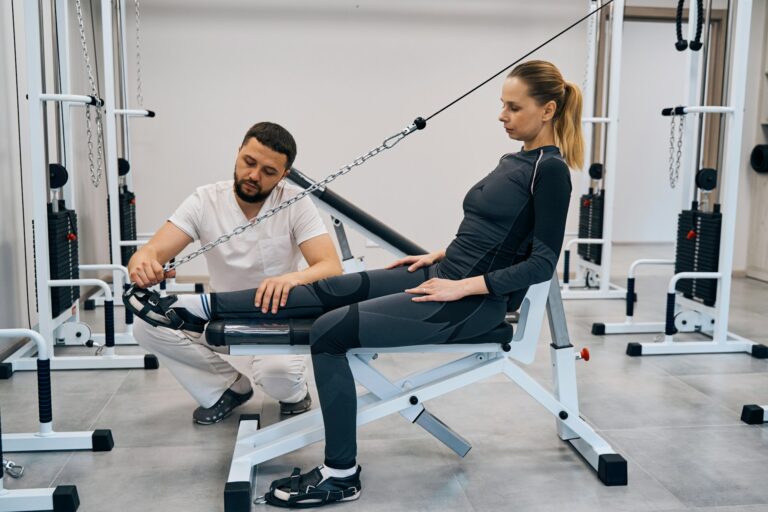Recovering from surgery can be a challenging journey, but regaining mobility is key to getting back to your daily activities and improving your quality of life. Mobility is essential because it helps you move comfortably and reduces the risk of developing stiffness and long-term pain. When it’s time to start moving again, having a plan can make all the difference.
Introducing exercises at the right pace can help gently encourage your body to heal. Whether it’s a knee operation or a shoulder repair, each surgery requires specific attention to improve function while preventing complications. By focusing on gentle movements and progressing at a gradual pace, you can safely enhance your strength and flexibility.
This article will explore various exercises that are crucial for increasing mobility after surgery. From gentle stretches to low-impact strengthening moves, you’ll find the techniques that best fit your recovery needs. Developing these habits not only aids in immediate recovery but also sets the stage for long-term improvements. Each step taken carefully leads you toward a healthier, more active lifestyle.
Understanding the Importance of Mobility After Surgery
Mobility is crucial after surgery because it aids in the healing process, helps prevent complications, and supports the return to daily activities. After surgery, it might be tempting to rest as much as possible, but remaining inactive can lead to stiffness, reduced flexibility, and in some cases, muscle loss.
Post-surgical mobility exercises can minimize scar tissue formation and reduce swelling. Scar tissue can limit movement and cause discomfort if not managed properly. By engaging in controlled movements, you’re encouraging collagen formation in a way that supports flexibility. Additionally, moving helps maintain blood flow, which is essential for nourishing your healing tissues and speeding up recovery.
Safety is a priority when starting mobility exercises after surgery. Your healthcare provider or physical therapist will likely give specific movements to avoid depending on the type of surgery you’ve had. It’s important to follow these guidelines closely to prevent any setbacks. The appropriate exercises focus on gradual improvement, helping you rebuild your range of motion and improve your overall functionality.
Understanding these aspects can motivate you to integrate mobility exercises into your recovery plan. It lays a strong foundation for the recovery journey, ensuring you’re on the right path to regaining strength efficiently and safely.
Gentle Stretching Exercises to Start Your Recovery
Stretching exercises are an excellent starting point for improving mobility after surgery. They help increase blood flow, reduce muscle tension, and enhance flexibility without putting excessive strain on your body. Starting with gentle stretches allows your body to ease back into movement, making the recovery process more manageable.
Here are a few simple stretches you might consider:
- Ankle Circles: Sit comfortably and lift one foot slightly off the ground. Slowly rotate your ankle in a circle. Repeat this five times in one direction, then switch to the other foot.
- Shoulder Rolls: This can be done sitting or standing. Slowly lift your shoulders towards your ears, then roll them back and down. Repeat five times to release shoulder tension.
- Neck Tilts: Gently tilt your head to one side, holding the position for a few seconds, then return to the center. Repeat on the other side. This helps release neck stiffness.
- Gentle Arm Lifts: While seated or standing, lift your arms slowly overhead, then bring them back down. This increases shoulder flexibility without strain.
When doing these exercises, ensure that you’re breathing steadily and not pushing your body to the point of pain. It’s normal to feel some tightness as your muscles stretch, but sharp pain should be avoided. Stay aware of your body’s signals, and adjust the intensity as needed. Gentle stretching is about experimenting with small expansions in your movement range, setting the stage for more dynamic movements as you progress in your recovery.
Low-Impact Strengthening Exercises for Enhanced Mobility
Strengthening exercises contribute significantly to enhancing mobility after surgery. They help rebuild muscle strength and stabilize the areas that had been operated on. Choose exercises that are gentle yet effective in gradually increasing the challenge as healing progresses.
- Seated Leg Press: This exercise helps strengthen the legs without putting strain on the knees or hips. Use resistance bands to perform slow, controlled presses while sitting comfortably.
- Ankle Pumps: Great for improving circulation and reducing swelling, ankle pumps can be done lying down or seated. Flex your foot up and down repeatedly to activate the muscles.
- Heel Slides: Gently slide your heel along the floor towards your buttocks and then back. This exercise helps increase range of motion, particularly after knee surgery.
- Wall Sits: These strengthen the thighs and core, offering stability to the leg muscles. Lean against a wall with your back straight, knees bent, and hold the position as long as comfortable.
- Arm Raises: If your surgery involved the upper body, perform seated or standing arm raises with light weights to build strength gradually.
Consistency is key with these exercises — start with a few repetitions and increase slowly as your comfort level improves. Always ensure you’re maintaining proper form to avoid unnecessary strain or injury.
Developing a Consistent Routine for Long-Term Success
Building a consistent exercise routine is vital for maintaining mobility gains post-surgery. It helps avoid the setbacks that can occur with prolonged inactivity. Consistency fosters muscle memory, reduces stiffness, and increases overall well-being.
- Set Daily Goals: Create realistic goals that are achievable. Whether it’s a short walk or a complete exercise set, having goals keeps you motivated.
- Track Your Progress: Document your progress in a journal or app. Seeing improvements, no matter how small, can boost morale and encourage regular activity.
- Balance Exercise with Rest: Balance is crucial. While regular exercise is important, overdoing it can cause fatigue and delay recovery. Listen to your body and rest when needed.
- Stay Flexible with Your Routine: Adapt your activities based on how you feel each day. If an exercise feels too difficult, modify it rather than skip it entirely.
- Seek Professional Guidance: Work with physical therapists or healthcare providers to ensure you’re doing the right exercises in the correct way.
Establishing these behaviors helps you transition smoothly back to everyday activities. A routine ingrained with exercise prevents post-surgery stiffness and enhances quality of life significantly.
Conclusion:
Revitalizing mobility after surgery is a journey that encompasses understanding recovery needs and integrating targeted exercises into daily life. By focusing on gentle stretching and strengthening exercises, you pave the way for a better recovery experience. Consistent routines tailored to individual needs can significantly reduce recovery times and improve overall mobility. Remember, patience and persistence are key elements throughout this process.
If you’re eager to regain mobility and want expert support in your recovery, contact Cornerstone Physical Therapy. Our physical therapy treatments are here to guide you through personalized rehabilitation plans that fit your unique needs. With our patient-centered approach, you can efficiently work toward a life without pain or limitations.



